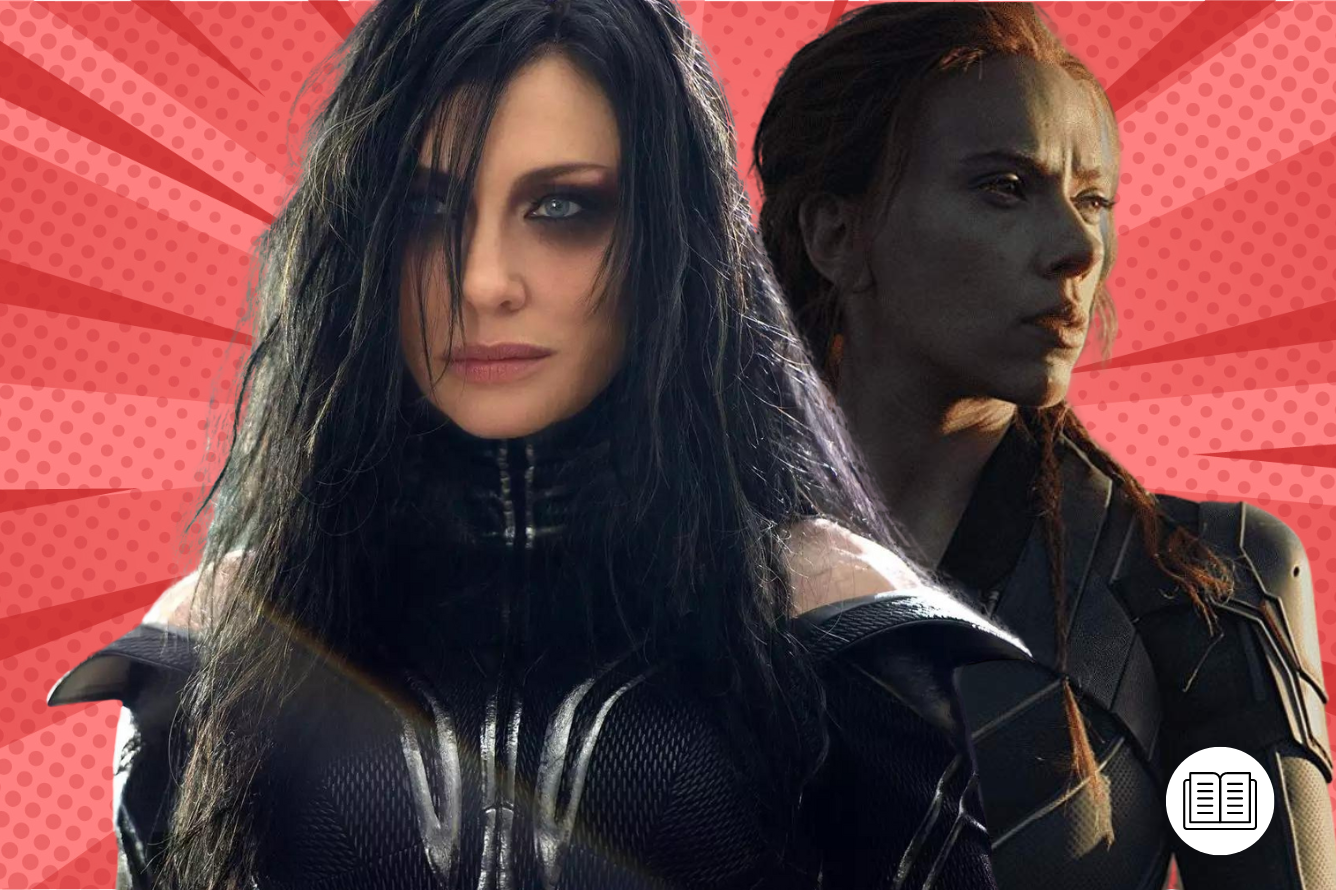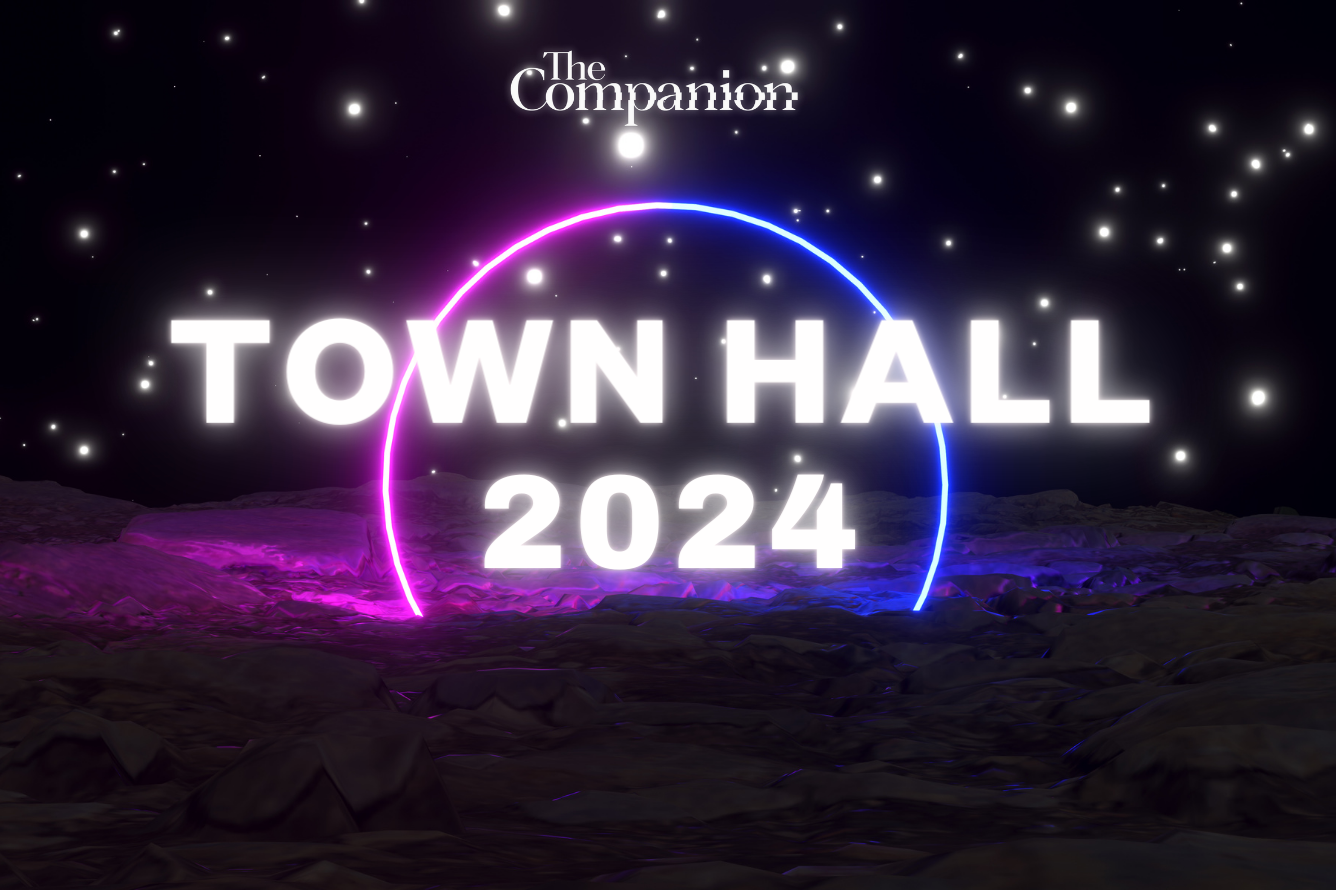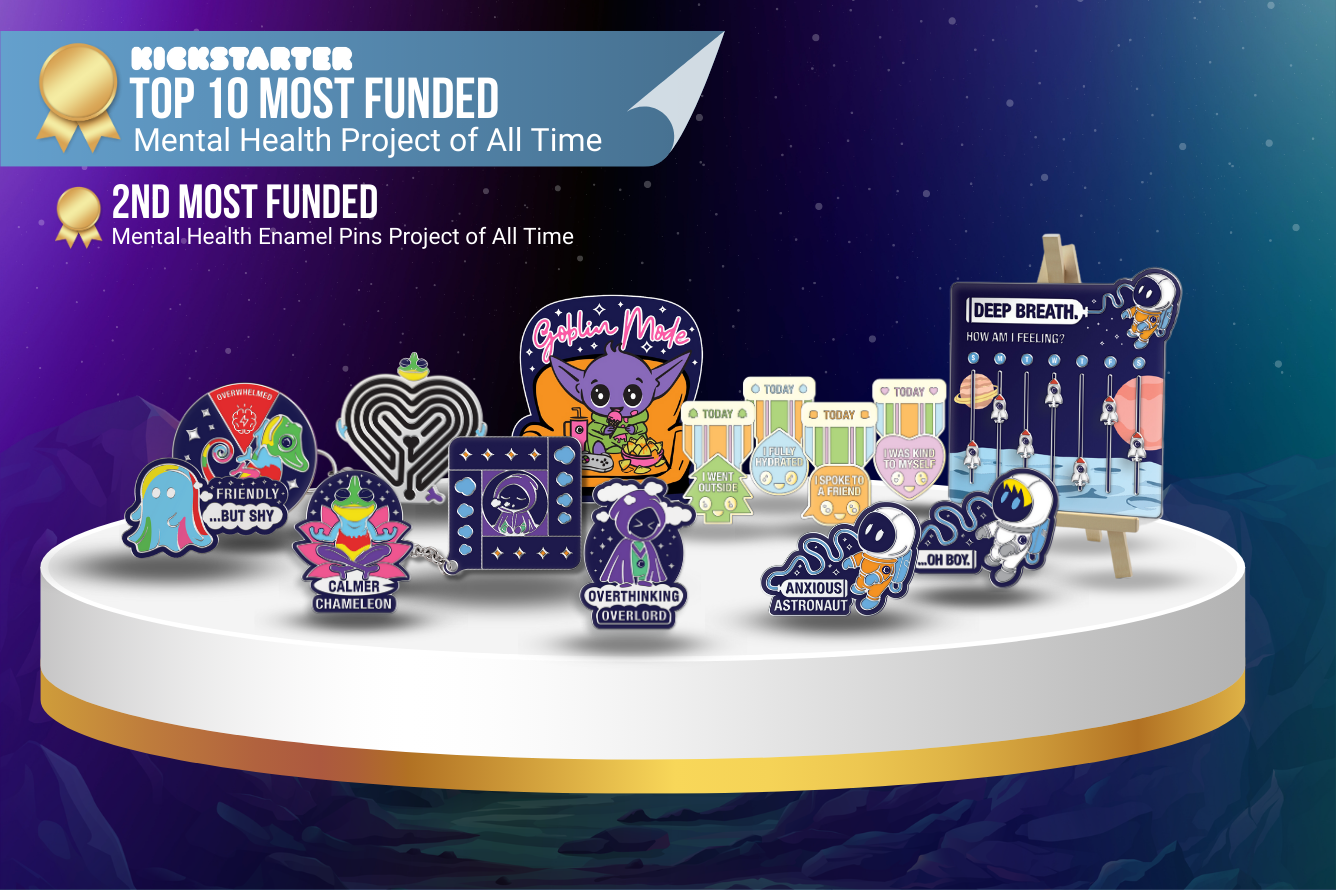When the men have fucked it up again, the rage of Marvel’s superwomen erupts like a planet’s sickness. In Thor: Ragnorak (2017), when Odin (Anthony Hopkins) quits his body on a Norwegian clifftop, a bubbling green portal, like a cellular rupture, or cancerous growth, opens and Hela (Cate Blanchett), his firstborn, strides forth, demanding the surrender of his bitterly divided sons, Thor (Chris Hemsworth) and Loki (Tom Hiddleston). Hela is Odin’s dirty secret and his supreme death machine, her lust for blood creeping in black around her icy eyes.

But does the rot around Hela’s eyes amount to much more than makeup? When Captain Marvel (Brie Larson) and Wanda Maximoff (Elizabeth Olsen)’s eyes blaze fire, their hands streaming rays of gold and carmine, do they own their right to rage? Can female fury amount to more than cancer, or an explosive tool of the patriarchy?
A common argument against screen visions of female violence – this year used disingenuously by Barbara Broccoli to deny women actors the opportunity to play the next James Bond – is that women should be bad bitches on their own terms, not simply mimic men. But in truth, commercial cinema, like the wider world, flinches at voicing female rage. Thus, Cate Shortland diverts the second half of her otherwise witty, emotionally credible Black Widow (2021) into a James Bond pastiche of avalanches, helicopters, and an exploding, Moonraker (1979)-style space station. Of course, it was written by a man; and though Shortland and stars Scarlett Johansson (also a producer) and Florence Pugh have spoken of their interventions in Eric Peason's script – their minor tweaks are inadequate.
That was the Marvel film of 2021 that could have probed female rage. Instead, the audience watched Natasha Romanoff (Johansson), a woman whose mind and body since childhood had been surgically manipulated by a megalomanic, blow up his boy toys while scolding her dad. Hah-hah, aren’t older white men ridiculous?

Hela and Anti-Colonial Rage in Thor: Ragnarok
Like the vilified Black man, Marvel’s abused women are required to be noble. At least Hela, rising from the crumbs of her father Odin’s power – and also written by Eric Pearson – shows us, up to a point, how you can’t let rip female rage without tearing down the patriarchal citadel. Soil-black, green-cloaked, crowned with a head of antlers – or thorns – each statuesque leg digging like a root into the earth as she approaches, Blanchett looks, in fact, like the wild nature god that Odin (Anthony Hopkins) is not. In Hela, we see Odin’s repression of his own appetites. Yet this awesome figure, the Goddess of Death, barely makes us quail.
Hela was Odin’s wingman, his Executioner and she still – this is important – draws her power from Asgard, her father’s planet. Together, they conquered realms. Finally, unable to contain her lust for imperial expansion, Odin imprisoned his daughter. Released on his death, Hela seizes the throne, summoning innumerable flying blades at will and raising a zombie army with one of Odin’s treasures, the Eternal Flame. Hela is Odin’s weapon and his cancerous growth. Ultimately, his sons destroy Hela by destroying the fatherly body that supports her: Asgard.

The story of Hela’s suppression cleverly comments on Western colonialism. Odin literally covers up their shared history, concealing the palace murals depicting their conquests with “goblets and garden parties”.
Director Taika Waititi adores laughing in the face of evil. His films combat fictional and historic horrors (racism, social stigma, vampires, the Holocaust) with charming silliness. And so Blanchett’s performance falls a whisker-lick short of pantomime baddie. Nonetheless, Blanchett unsheathes her steel whenever Pearson’s brisk script sharpens, penetrating the stinking foundation of our Western world’s wealth:
“Odin, glad to have it, ashamed of how he got it.”
Further Reading on Thor Ragnarok's Comedy
The Slapstick Deicide of Marvel’s Thunder God - Thor: Ragnarok transformed Chris Hemsworth’s Mightiest Avenger, but was it for the better?
She may be the Goddess of Death, but Hela’s rage is neutered. Her warriors have not a single oozing fang to rival the mighty-jawed, hideous Outriders of death lord Thanos (Infinity War, Endgame). When Hela rips out Thor’s eye, it’s a swift incision. When she leaps into the air for her crucial one-on-one with Thor, Waititi cuts the scene. Thor films inherit their jocularity from their bombastic hero, but Eric Pearson’s script too frequently, as in Black Widow, diverts to another world of boy toy amusement: Jeff Goldblum, and his gladiatorial gameshow on planet Sakar. It’s a sad day when a critic regrets Goldblum's screen time.
Team Thor evacuates the people of Asgard and uses one boy toy, the Eternal Flame, reawakening the apocalyptic demon Sutur, to defeat another, Hela. In Pearson and Waititi’s spectacle of fun and games, Hela becomes little more than a patriarchal weapon gone berserk.
Thor: Ragnorak was made in 2017. By tragic chance, the taking down of Odin’s statuary foreshadowed George Floyd’s murder in 2020 and the Black Lives Matter supporters’ removal of racist statues. Hela’s smashing of Odin’s murals is a reminder that the roots of colonial oppression continue to spread; violence is sometimes a necessary stage.

From Abused Daughter to Weaponised Woman: Nebula, Taskmaster, and Black Widow
While Blanchett’s Hela wouldn’t look out of place on the Givenchy runway, Nebula (Karen Gillan) and Taskmaster (Olga Kurylenko), cyborg daughters, respectively, of Thanos and the Black Widow-breeding General Dreykov (Ray Winstone), are two unpretty female weapons. James Gunn’s loveable Guardian of the Galaxy (2014, 2017, 2023) films provide light relief to the darker Avengers world, meaning that Gillan’s performance, funny yet ominous and one of the strongest among the cast, might be overlooked. She seethes with resentment and pathos, her rebuilt eyes glittering like two blasted midnights, her guttural, dusky voice brimming with unshed tears.
Nebula is Thanos’ tortured, unthanked child, her body parts pulled off and replaced by weaponized machinery as a penalty for losing to his favorite daughter, Gamora (Zoe Saldana). Another abused boy toy, she vows to tear her father apart and murder her sister. However, having been saved from her burning spaceship by Gomora, she reveals that her real woe is Gomora’s abandonment (“You wanted to win, I wanted a sister”).

Further Reading on Sisterhood in Marvel
Gamora and Nebula – Sisterhood in the Shadow of Abuse | “This isn’t love.” The words – and the plight of Gamora and Nebula – will resonate with anyone who grew up in an abusive home.
This idea, that sisterhood should atone for fatherhood’s crime, is pushed, too, in Black Widow (2021). The film returns to Black Widow Natasha Romanoff’s greatest regret, her killing of innocent schoolgirl Antonia Dreykov when she bombed her father, General Dreykov, the arch-villain who kidnapped girls like Romanoff into militarised slavery via his Red Room. In fact, father and daughter survived, but Antonia is so mutilated that, having previously lived freely, she’s implanted with a chip, rebuilt, and subjected to the brainwashing reserved for other Black Widows. In a controversial rewriting of one of Marvel comics’ most intimidating villains, Antonia becomes Taskmaster, a bulky killing machine with instant muscle memory, who mimics the Avengers’ fighting moves.
Taskmaster’s first fight with Natasha, on a darkening bridge, is shrouded in sinister gloom. Natasha, normally unflappable, is disturbed, momentarily, by Taskmaster mirroring her every move. Shortland has talked of wanting to recreate the threat by men to women on the street and for the audience to “feel the violence”. But by focusing on the perceived male threat, we avoid female violence – and in any case, Natasha is barely shaken. Meanwhile, by placing Taskmaster under fatherly control and making her enormous stride so suggestive of her character’s male origins, she cannot act as an instrument of female rage, despite her stonking power.

Near the film’s climax comes the opportunity for a blistering return match, with might and right on Antonia’s side. Dreykov, crowing in his den, reveals Taskmaster’s identity to a remorseful Romanoff saying, “You gave me my greatest weapon.”
Unfortunately, Shortland doesn’t show Antonia as anything other than a weaponized woman. Marvel, while giving us increasingly diverse stories, has been slow in shedding its old-fashioned portrayal of scarring as evil (see Whitney Frost in Agent Carter). Taskmaster’s skull-like helmet is revealed to the sickeningly suspenseful cellos of her signature musical motif. Despite Johansson’s wrung expression, the music cues us to be appalled, not empathic. Antonia is now finally facing Romanoff, whose violence cursed her life, but she is a massive mute, like Jaws in Moonraker (who at least gets a happy line at the end of that film), unable to express her rage. Once again, female rage is handed to the daddies, as Antonia, rather than thrashing Romanoff, is sent off to fight Natasha’s father figure, the Red Guardian, while another father, Dreykov, holds forth:
“These girls were trash. I recycle the trash. I give them purpose. I give them a life… using the only natural resource the world has too much of: girls.”
It’s a resonant, egomaniacal speech evoking real woman-hating men in power, but the storyline once again fetters female rage to bad fathers. It would be great to see (or hear about) Johansson unleashing magnificent torture upon Dreykov, but he receives only, eventually, a brief violent reply. The greatest physical pain wreaked is on her own body, as the other Black Widows close in on Johansson. Johansson talked about how Black Widow was sexualized in former films. Yet just as the Red Room resembles nothing more unpleasant than a training room for pole dancers, this vision of cold-eyed, black catsuited women, a grenade of deprogramming powder dispersing their huddle, might as well be a perfume ad (‘Red Dust, Paris-New York-Moscow’). Pop culture loves a bitch fight, the more purposeless and sexily clad, the better.

Marvel has struggled with giving women a motive to rage, perhaps because its writing group is dominated by men – but Pearson does write a complex closeness between the estranged Black Widow sisters, Natasha and Yelena. Their most satisfying, intimately lit fight in Black Widow is domestic. Kicking off in the kitchen of a Budapest apartment, it culminates in a Freudian reworking of their familial abandonment, strangling each other with curtains, the cords around their necks suggesting umbilical cords. The sibling bickering between Natasha and Yelena (Florence Pugh), is flecked with pain over betrayal and abandonment. Natasha and Yelena’s sisterhood is the grimly warm heart of this movie.
Dottie Underwood vs Agent Carter: Primal Boy Toy vs Boy’s Mother
On the other hand, why can’t women be cold and nasty? Marvel comic books are traditionally spaces to delve into primal fears. And a roaringly motiveless boy toy can be more thrilling, as a violent creation, to a badly realized every woman like, say, the eponymous Agent Carter.
Agent Carter (2015-2016), a sleuth-style Cold War drama about the rise of Peggy Carter (Hayley Atwell), the British intelligence agent who defended the world alongside her sweetheart, Steve Rogers, a.k.a. Captain America, is a crude pastiche (its high point the empathically prissy James D’Arcy as the original Jarvis, butler to Howard Stark). But it sparks into life when reverting to Marvel’s most cartoonish nightmares. Black Widow Dottie Underwood (Bridget Regan), Peggy Carter’s antagonist, is a welcome dollop of wide, blue-eyed, fake American cream. Her succubus stereotype is far preferable to the sly sexing up of Atwell, who’s obliged to play firm-jawed British nanny to the dumb Yank chauvinists in her office while flashing her stockings to the camera.

Dottie’s emotions, her remorseless killings, and getaways – surviving being smashed by Carter through a window onto a car; or snapping her best friend’s neck in the Red Room as a child – are inexplicable, and Regan has more fun, for it. There’s a villainous purity to Dottie’s arc, underscored, like Taskmaster in Black Widow, by those horror-flick, Russian strings, even as, in Season 2, she resentfully helps Peggy. Mimicry, a traditional Black Widow skill, is Dottie’s passion. “I’m Peggy Carter,” she parrots gleefully, practicing Peggy’s accent while eyeing up Peggy’s photograph of Steve. Then she snogs Peggy into almost death by wearing the agent’s sleep-inducing lipstick. It’s the sexiest, most gothic kiss in two seasons – possibly across the whole Avengers franchise – as Dottie moves in for the kill, semi-squatting over Peggy with a dagger. Dottie is aroused by weapons, not the men holding them, who get their necks, snapped, too, after she’s climbed the walls like a spider. There are shadows of Killing Eve (2018-2022) and Single White Female (1992), stories that reflect (despite the huge female following of the former), cultural lesbo-phobia, but at least Dottie’s violence has vim. One fight with Peggy features fists on faces, the old umbilical drapery strangle, and a baseball bat. “It’s swell to see you,” she purrs. “Isn’t this fun?” Dottie is a cipher and she knows it.
Peggy Carter’s clout, by contrast, is restrained not only by the stockings flashed under her overly tight 1940s skirt suit but by heroic moralizing. Hayley Atwell, enunciating her very British vowels, like a Bluebell girl mouthing for tips in a nightclub, makes speeches about patriotism. She’s a good person making speeches about being good, her crimson lipstick matching her absurd little hat. Indeed, the whole matchy-matchy neatness of the character means that shagging Peggy would be like bedding the Queen Mother: fitting the Marvel habit of turning heroic women into virgins or mothers or wives. Called a “mother” and “nanny” by her carping male colleagues, Peggy nobly rises above the name-calling. And in case you missed Peggy’s Madonna complex, she guards Steve Rogers’ blood in her room, like a holy relic.
Further Reading on Marvel and the Female Body
Savage vs Sensational She-Bodies from Jennifer Walters to Hope van Dyne - From comic-book origins to Marvel’s She-Hulk, the female body has traditionally fallen between two poles: the sensational and the savage.
Agent Carter’s writers are not blind to American bigotry. But Dottie Underwood criticizes Carter’s “idealism” while assuring us that “you’ve no idea how deep the rot goes in the USSR.”
Female Rage and American Foreign Policy: Captain Marvel
The implication across the MCU, via Marvel’s powerful Eastern European women like Underwood or Wanda Maximoff, is that, though America is imperfect, the worst villains are ‘over there’. Rage is the catalyst for Wanda and Captain Marvel to discover their awesome powers, but it is comprehensible only through the enduring American values of family and home.
Among the weaponized women of Marvel, Captain Marvel (Brie Larson) is the most gigantically powerful. Yet the nostalgic tone of Captain Marvel (2019) hints at her toylike status. Writer-directors Anna Boden and Ryan Fleck and writer Geneva Robertson Dworet, amusingly (or unconsciously) surround their superhero with toys and games. Captain Marvel crash-lands to Earth through a Blockbuster video store; the film features a Streetfighter II machine, grunge music, and a Happy Days Fonz lunchbox, concealing the pre-Earth-time cosmic energy source that powers our girl, the Tesseract. And when an ex-alien colleague accidentally pulls a Nerf gun on Captain Marvel, it’s funny because Captain Marvel is the biggest and most dangerous toy in the film.

Technically, Air Force pilot Carol Danvers – Captain Marvel – is weaponized by her mentor Dr. Lawson (Annette Bening), a good alien Kree defending her life’s work to bring freedom to those persecuted by the Kree Empire. Like Natasha Romanoff, however, Danvers is kidnapped and mind-controlled by a man, Kree commander Yon-Rogg (Jude Law), who uses her amnesia to deploy her powers. Her captors explicitly refer to Danvers as “the weapon.”
Only rage – a genuine emotion – can retrieve Danvers’ memory and make her whole again. Law’s job is to control her catalytic rage. Their fight training scenes are riveting, his facial muscles riddled as he lies to her: “Anger only serves the enemy.” Like Dreykov and Romanoff, however, psychological warfare doesn’t deepen. By the time Captain Marvel encounters Yon-Rogg for a final showdown, her escape from this nightmare is voiced like a girl shrugging off a father’s approval (“I have nothing to prove to you”). From the mightiest warrior in the universe, this feels rather twee.

Partly, this is due to the recurring flashbacks to stock playground humiliations, seeing little Carol Danvers taunted for her weakness as a girl. Partly, as with Peggy Carter, it’s the do-goodery of Carol’s violence. Like Thor: Ragnorak, female rage is used to comment on America’s expansionist transgressions. Danvers’ amnesia is an obvious analog to PTSD. Traumatized, as an American soldier pushed into unjust wars, Captain Marvel is expected, as no single American soldier would be, to atone for America/Kree’s crimes against refugees. Once she realizes the Scourge people she’s been persecuting are innocent, Carol fights in defense of family and home: her own alternate family, the Rambeaus, and those of the Scourge. But ennobling women by depriving them of anger and resettling them into familial models is an old patriarchal trick.
Stabilizing Female Rage: Wanda, Dark Phoenix, and Kate Bishop
Time and again, Marvel has flirted with unbounded female rage, only to suggest that it needs to be stabilized by men, or family, rather than women deciding when, why, and how. In the Halloween 2021 edition of the Hawkeye comic, Kate Bishop, who develops her powers after a sexual assault, calls upon a patriarchal triumvirate to steady her archery (‘Clint’ – ‘The Avengers’ – ‘Dad’). Dark Phoenix (Sophie Turner) is the most deadly instance, her powers going haywire after she accidentally causes her mother’s death at the wheel of the family car, after another paternal abandonment. Dark Phoenix (2019) is an example of women’s grief and trauma being too much for Marvel to bear, while the ironically retro WandaVision (2021), mounts a weird and wonderful satirical sitcom to contain Wanda Maximoff’s raging grief. Elizabeth Olsen plays no boy toy but a grown woman whose passionate love for her beloved and anger at the cost of superheroism can be read in the lines on her rosebud face.

Her kidnapping of a suburban town, forcing them to enact a living sitcom, mirrors Marvel’s male tyrants, except her motives are more sympathetic. Nonetheless, the culmination of this humorous, disturbing, and emotional series sees Wanda isolating herself with her powers, an image that suggests sickness, recovery, and quarantine. Apparently, the Scarlet Witch, maker of worlds, can’t rage and have a family. Marvel’s relating of sickness to seizing patriarchal power will continue in Thor: Love And Thunder. Natalie Portman, Lady Thor, gains Thor’s powers by picking up Mjolnir after Thor degenerates. But she’s battling cancer and whenever she uses Mjolnir, it harms her recovery. The Marvel woman’s right to rage comes at a heavy, even mortal, cost.
Marvel is starting to see, however, that systemic inequality sometimes needs a Hela, a Sylvie, or a Wanda, to break free of the system, before things can be put right. Raging on screen provides a cathartic release from the pressure on real women to play nice. It’s a comical moment when the Red Guardian in The Black Widow groans, “I want to break something.” But we need to smash stuff, too.
This article was first published on October 26th, 2021, on the original Companion website.
Further Reading on All Topics
- Gamora and Nebula – Sisterhood in the Shadow of Abuse | “This isn’t love.” The words – and the plight of Gamora and Nebula – will resonate with anyone who grew up in an abusive home.
- The Slapstick Deicide of Marvel’s Thunder God - Thor: Ragnarok transformed Chris Hemsworth’s Mightiest Avenger, but was it for the better?
- Savage vs Sensational She-Bodies from Jennifer Walters to Hope van Dyne - From comic-book origins to Marvel’s She-Hulk, the female body has traditionally fallen between two poles: the sensational and the savage.
The cost of your membership has allowed us to mentor new writers and allowed us to reflect the diversity of voices within fandom. None of this is possible without you. Thank you. 🙂









